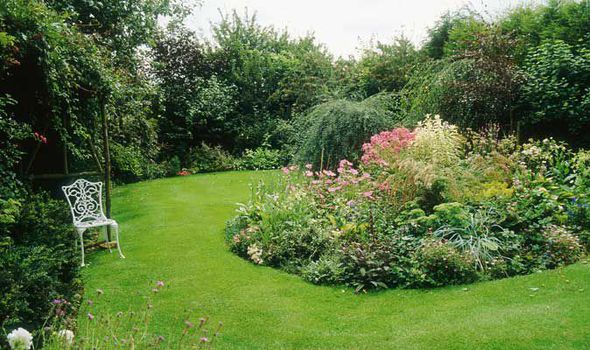Garden
A garden is an enclosed area of, typically external, land that is cultivated with natural and ornamental features.
The most common type of garden is a residential garden, which a domestic building. However, there are many different variations, including:
- Winter garden: A garden maintained throughout winter.
- Landscape garden: A large-scale landscape.
- Zen garden: A small-scale idealised landscape with plants usually kept to a minimum.
- French formal garden: Based on symmetry and the idea of imposing order on nature.
- Tropical garden: Tropical conditions are created to enable the cultivation of tropical plants.
- Roof garden: A garden located on the roof of a building.
- Kitchen garden: and ornamental vegetable garden.
- English garden: A style of landscape garden that idealises nature.
While residential gardens are often maintained by the property owner, professional gardeners, horticulturists and landscape architects are often involved in the design of larger-scale or specialist gardens.
Garden design involves drawing up plans for laying out and planting different landscapes, and this will largely be determined by the purpose for which the garden is intended. Some gardens are purely for aesthetic or ornamental purposes, while others can be more functional – growing food and other crops, and so on.
Other considerations for the planting of gardens include:
- The location, climate and exposure.
- The soil type.
- Topography.
- Means of access.
- The potential for pests to damage the garden.
- The horticultural requirements.
- The appearance of the plants season-by-season.
- The typical lifespan of the plants.
- The growth habits of the plants – their size, rate of growth, and so on.
- The maintenance needs of the garden.
- The elements of hard landscape and other features that will be included.
- How the garden will be used.
- How the garden will connect and/or interact with the building or other structures.
- Privacy and security.
- Budget and time constraints.
The natural elements included in a garden typically comprise:
- Flora (trees, shrubs, lawns, etc.).
- Fauna (anthropods, birds, etc.).
- Soil, compost, mulch, etc.
- Water (streams, ponds, etc.).
For more information, see soft landscape.
Some of the hard landscape (or hardscape) elements that can be part of a garden include:
- Paths.
- Patios.
- Decking.
- Sculptures.
- Fencing and walls.
- Drainage systems.
- Irrigation systems (e.g. sprinklers).
- Lights.
- Structures (e.g. sheds, gazebos, pergolas, follies, greenhouses).
- Water features (e.g. fountains, ponds, creeks, waterfalls).
- Trellises.
NB A Guide To Climate Change Impacts, On Scotland’s Historic Environment, published by Historic Environment Scotland in October 2019, defines gardens and designed landscapes as: ‘A category of asset encompassing botanic gardens, parks, landscapes laid out for artistic effect and a range of features within these areas.’
For more information, see hard landscape.
[edit] Related articles on Designing Buildings Wiki
- Allotment.
- Clairvoyee.
- Crinkle crankle wall.
- Exedra.
- Eyecatcher.
- Fire pit.
- Folly.
- Fountain.
- Garden cities.
- Garden land.
- Gazebo.
- Green roof.
- Growing space.
- Hard landscape.
- Hardy Plants and Plantings for Repton and Late Georgian Gardens (1780-1820).
- Hydroponics.
- Landscape architect.
- Landscape design.
- Lawn.
- Low maintenance plants.
- Park.
- Parterre.
- Pavilion.
- Planting.
- Rain garden.
- Rainwater harvesting.
- Seeding and turfing.
- Sharawadgi.
- Soft landscape.
- Summerhouse.
- The secret life of the Georgian garden.
- Topiary.
- Types of garden fountain.
- Walled kitchen gardens of the Isle of Wight.
Featured articles and news
Infrastructure that connect the physical and digital domains.
Harnessing robotics and AI in challenging environments
The key to nuclear decommissioning and fusion engineering.
BSRIA announces Lisa Ashworth as new CEO
Tasked with furthering BSRIA’s impressive growth ambitions.
Public buildings get half a million energy efficiency boost
£557 million to switch to cleaner heating and save on energy.
CIOB launches pre-election manifesto
Outlining potential future policies for the next government.
Grenfell Tower Inquiry announcement
Phase 2 hearings come to a close and the final report due in September.
Progress from Parts L, F and O: A whitepaper, one year on.
A replicated study to understand the opinion of practitioners.
ECA announces new president 2024
Electrical engineer and business leader Stuart Smith.
A distinct type of countryside that should be celebrated.
Should Part O be extended to existing buildings?
EAC brands heatwave adaptation a missed opportunity.
Definition of Statutory in workplace and facilities management
Established by IWFM, BESA, CIBSE and BSRIA.
Tackling the transition from traditional heating systems
59% lack the necessary information and confidence to switch.
The general election and the construction industry
As PM, Rishi Sunak announces July 4 date for an election.
Eco apprenticeships continue help grow green workforce
A year after being recognised at the King's coronation.
Permitted development rights for agricultural buildings
The changes coming into effect as of May 21, 2024.






















